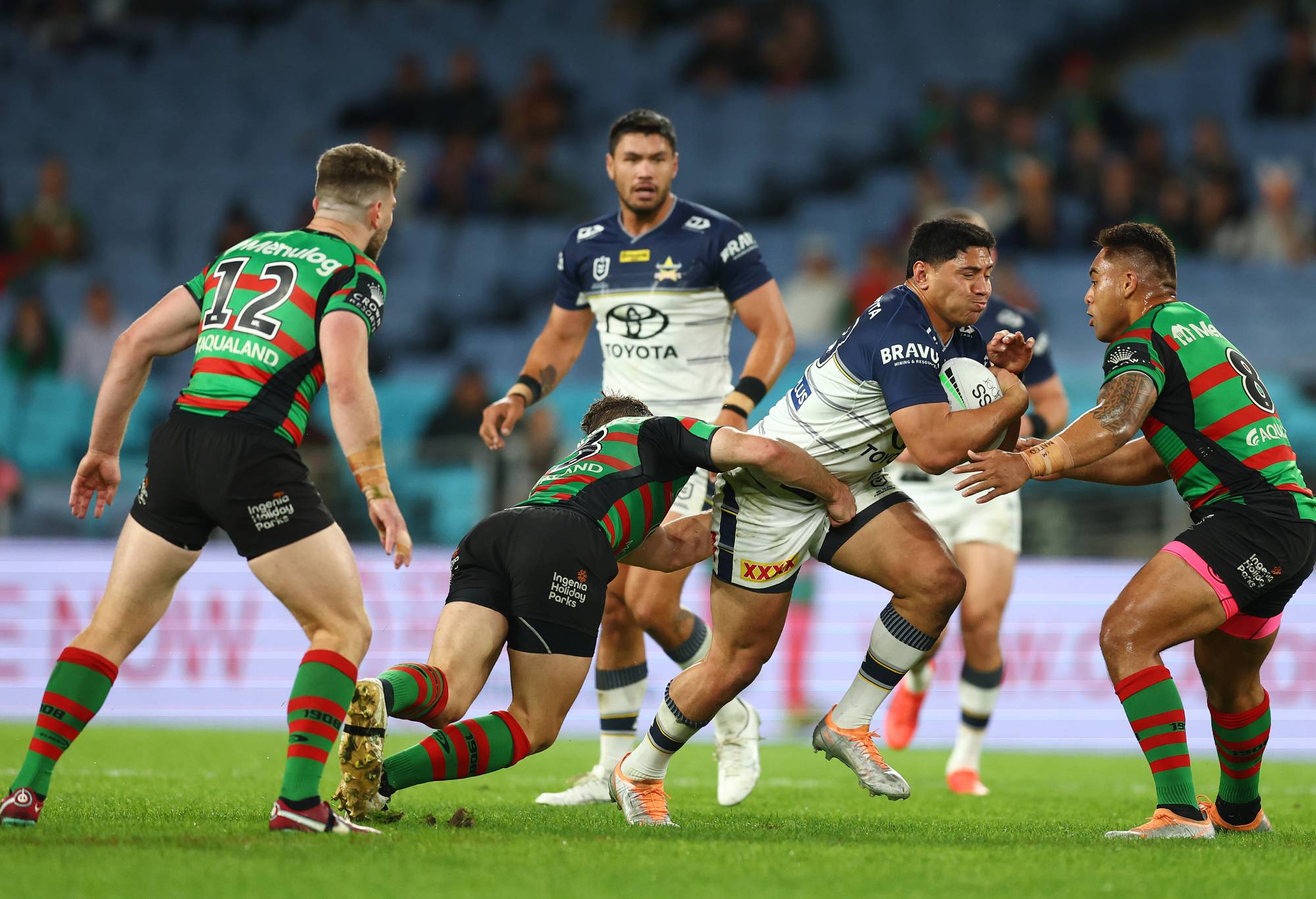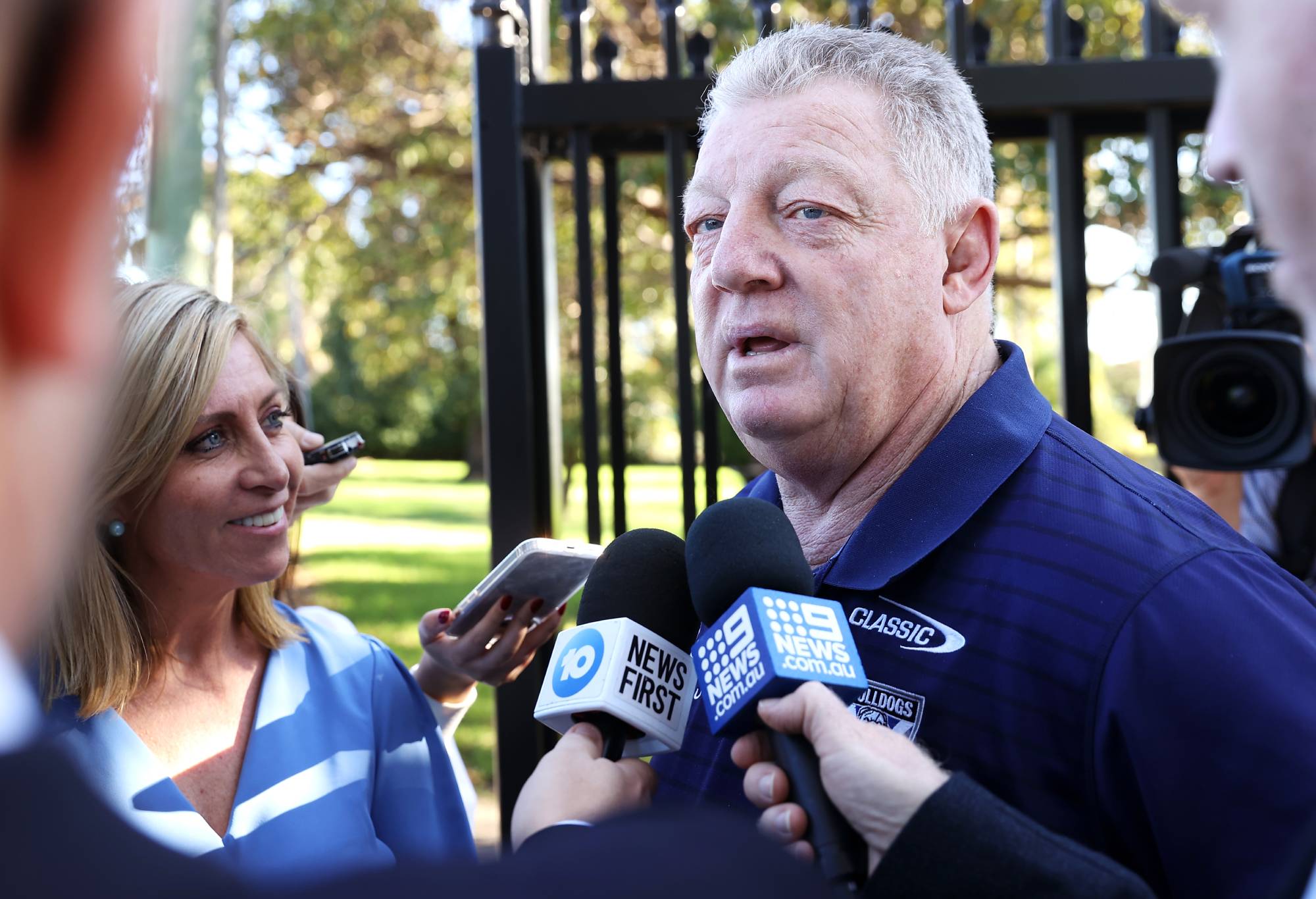Two-hour games. Coaches being catty. Phil Gould making wilfully ignorant declarations. Yes, footy fans, concussion is back on the menu.
Following a round of NRL action in which we saw Victor Radley end up in convulsions from a head knock, Coen Hess sent from the field and charged for a high shot, and Todd Payten and Jason Demetriou getting into a tit-for-tat over the issue of medical advice, concussions are on every furious footy follower’s lips.
And the reason I suspect they’re furious is due to some fundamental misunderstandings and misconceptions about concussion.
It’s all right that some are low on this – the NRL has been terrible at explaining concussion (they’re just flat-out bad at communication in general), and the likes of Nine and Fox are far more interested in creating clicks and controversy than informing the public about the most important sporting medical issue of our time.
So let’s take a moment and familiarises ourselves with a couple of basic facts about head injuries in the context of the National Rugby League.
Firstly, not all head knocks result in concussions, nor do all concussions come from head knocks – according to the American Association of Neurological Surgeons, concussions can “occur as a result of rapid acceleration-deceleration of the head, such as in whiplash injuries”.
Secondly, an act of foul play doesn’t need to occur to check a player for concussion, nor does an act of foul play automatically result in a player being assessed.
Both these points were brought into focus when Tevita Tatola was hit around his middle in a textbook tackle from Jason Taumalolo.

(Photo by Mark Metcalfe/Getty Images)
It was a beauty, that hit. Nothing remotely wrong with it.
But there’s more than one way to ring a bell and the Souths player was assessed for a head injury, which left Todd Payten fuming.
“There was one in the first half where Jason actually hit Tatola through the ribs and there was a HIA,” the Cowboys coach said in the post-match presser. “That is bending the rules at best.”
If you watch the hit, Taumalolo’s hit occurs with force that sees Tatola’s head snap forward and back in a motion that is entirely consistent with whiplash.
Tatola was obviously cleared to continue playing, but to reach the conclusion he couldn’t have been concussed because he didn’t get hit in the head – and that Souths and their medical staff were “bending the rules at best” – is to show ignorance of the causes of concussion, which is problematic at best for a first-grade NRL coach.
What was far more problematic was Coen Hess’ hit on Campbell Graham in the closing stages of the same game.
Hess was eager to put on a big hit, likely in an attempt to force an error and get his side back into the match, but the result was a high shot that saw Graham knocked to the ground and Hess given 10 minutes in the bin.
Of course, Phil Gould acted like the world was ending. “He hasn’t hit him in the head, and to his credit Campbell Graham bounces up,” Gould said on Nine’s post-game coverage.
“What do you want the game to look like if that’s illegal? What did you want him to do?
“Did you want Coen Hess to run in and tackle like Victor Radley? Put his head down at his knees?”
It was a wilfully ignorant comment that borders on dangerous such is its level of disinformation.
For starters, as Graham has since clarified, Hess did hit him in the head.
Secondly, having been hit in the head, Graham lies on the ground for an extended period of time. At no point does he appear to have lost consciousness or control of his faculties, but to say he “bounces up” is patently false.
Finally, and most importantly, does Gould honestly believe there were only two options for Hess: to either hit Graham the way he did or to get cleaned up himself in a way that would leave him convulsing on the ground?
That none of the other 5000-plus tackles that took place over the course of this weekend that didn’t result in any form of injury or concern were an option?
Radley’s injury was one of the more distressing sights I’ve seen on a footy field but it was one that came about from the defending player getting his technique wrong. It’s a rarity in the game.
What’s far less rare is a defender deciding to hit high and the tackle going wrong. As a percentage, a tackler making the choice to go high is much more likely to end in a concussive incident than someone who makes a tackle in which the neck and head are not part of the target area.
More players get hurt tackling legally, but that’s because it happens more often than illegal tackles.

(Photo by Mark Kolbe/Getty Images)
Yet you watch the crisis merchants of the game say Radley’s injury is evidence that tackling low is more dangerous than tackling high (Gus probably wheeled it out on Monday night on 100% Footy, but I’m not wasting my time on that garbage).
I get how the media works, but Nine’s insistence on asking Gus for his opinion on the matter of hits to the head is not constructive. He always – always – sides with the player who made the dangerous contact and then defends it using outdated or entirely disingenuous arguments.
He throws his hands up and asks questions like, “Is this what we want our product to look like?”
To which I respond, yes.
Players being discouraged from smashing each other’s heads is exactly what we want our product to look like.
It goes without saying that in a high-speed collision game there are going to be accidents, but players still have a duty of care to one another and Hess failed his duty.
He made a decision to go high and as a result hit Graham in the head. It was an action that had a higher than usual risk of being dangerous yet Hess decided to take it all the same, showing a lack of care that saw Hess sent from the field for ten minutes and subsequently charged with a careless high tackle.
It’s an appropriate outcome. Hess may not have wanted to hit Graham in the head – be it with his own head or his shoulder – but by going as high as he did, he failed in his duty of care.
Acts like that needs to be discouraged and so when they occur, the offending player being sent to the bin is what the game needs to look like.
But – but, but, but – in the immediate aftermath of the hit, Graham was taken from the field of play, only to return a few minutes later.
It left Cooper Cronk and Corey Parker a bit miffed on Fox’s coverage.
“Campbell Graham doesn’t have a HIA assessment, doesn’t have any protocols, leaves the field and comes back on just because it’s a foul play replacement, I think that’s a little strange. That’s a little grey area for me that needs to be cleaned up,” Cronk said.
“Surely someone in our game can make a decision and say that is not right. It didn’t look right, it didn’t feel right and everyone sitting there watching goes ‘hang on what just happened’, he just left the field for an HIA but he’s back on because it wasn’t an HIA but one is 10 in the bin,” Parker responded.
Corey, Cooper, real slow: an act of foul play does not automatically result in a player requiring an HIA.
Graham came from the field because an act of foul play resulting in a sin bin or send off effectively gives a free interchange to the team awarded the penalty. And in the final minutes of a brutal contest, you better believe the Bunnies used it.
But their medical staff found Graham was right to play, so he returned to the field.
You may not like it, but trusting the word of far more qualified people is how the whole world works (it’s why those of us who aren’t total morons got vaccinated).
And, again, Hess was sent from the field for his action, not the outcome. You don’t get 10 in the bin as a square-up for a concussion – how would that even be fair, given an HIA takes 15 minutes?
As for an incident like Jayden Campbell getting taken from the field for a 15-minute HIA after Adam Clune clipped him on the chin in the Titans vs Knights game?
I’ll admit Clune should have at the minimum been penalised, but the discussion around it – that it was unfair for Campbell to be removed since his team didn’t even get a penalty – again, missed the point.
No, the independent doctor and the bunker weren’t on the same page. They’re not supposed to be – otherwise the doctor wouldn’t be independent. The outcome for Clune has nothing to do with Campbell.
An independent doctor saw the Titans fullback display signs of concussion in the aftermath of the hit and he was removed from the field of play for his own safety.
That’s what the doctor is there to do, regardless of the hit that caused the symptoms.

(Photo by Mark Kolbe/Getty Images)
In a similar vein, if the independent doctor had seen Graham display certain signs of concussion, he would not have been allowed back on the field.
Quite what these signs are, I don’t know – you’ve got the wrong Frost – but we have to trust the judgement of the independent doctor.
I’ll cede one point here at the end: yes, some clubs probably are gaming the system a bit with their calls for HIA and it needs to be looked at. But this is the first season of independent doctors and very early in the overall journey to lessening incidence of concussion.
For the time being at least, it is far better that a game is slowed down – even for cynical reasons – than a head injury is ignored.
Finally, if you look at each of the incidents from the weekend – from Radley’s sickening injury to Taumalolo folding Tatola to Hess’ carelessness for Graham to Clune clipping Campbell – you’ll notice that they’re all completely different and thus comparing them and finding inconsistencies is neither fair nor constructive.
But, based on the chat we’ve been subject to this weekend, being fair and constructive doesn’t appear to be the aim at all when it comes to concussion in rugby league.































































































